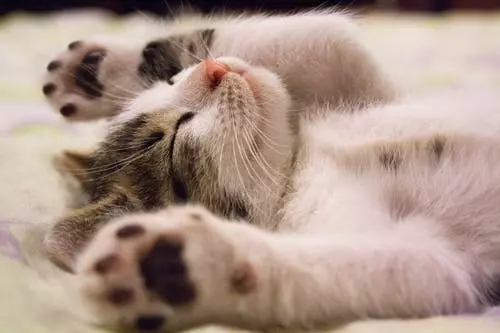Scratching is a natural behavior for cats, serving various purposes that are essential for their physical and mental well-being. Understanding the reasons behind this behavior can help us provide appropriate outlets for their scratching needs.
Territory marking is one of the primary reasons why cats scratch. By leaving visible and olfactory marks through scratching, cats communicate their presence to other felines and establish their territory. They have scent glands in their paw pads that release pheromones when they scratch, further reinforcing their territorial claims.
Nail maintenance is another important function of scratching for cats. By scratching, cats shed the outer layers of their claws, keeping them sharp and healthy. This behavior helps prevent their claws from becoming overgrown or damaged.
Scratching also allows cats to stretch their muscles and engage in physical exercise. Scratching posts and other designated scratching areas provide cats with an opportunity to stretch their bodies, promoting their overall fitness. It also helps them release built-up energy and maintain healthy muscle tone.
In addition to these physical benefits, scratching can serve as a stress-relieving activity for cats. Just like humans engage in activities like nail-biting or skin-picking when stressed, cats may excessively scratch their skin due to increased anxiety levels. It can be a way for them to release tension and frustration.
However, excessive and compulsive scratching can be a sign of underlying issues, including stress and anxiety. Stress-induced itching, known as psychogenic dermatitis, is a condition that affects many cats. When a cat experiences stress, the body releases stress hormones such as cortisol. These hormones can affect the skin, leading to itchiness and discomfort. Stress can also compromise the skin’s barrier function, making it more susceptible to irritation and itching.
If you notice your cat excessively scratching or showing signs of skin damage, hair loss, or sores, it is important to consult a veterinarian. They will be able to diagnose stress-induced itching and rule out any underlying medical conditions that may be contributing to the behavior.
There are several common sources of stress for cats, including changes in their environment, introduction of new pets, lack of stimulation, or even loud noises. Identifying and addressing these stressors can help alleviate their anxiety. Providing a calm and enriched environment, offering plenty of playtime and interactive toys, and creating designated scratching areas can all help reduce stress in cats. In severe cases, your veterinarian may recommend behavior modification techniques or medication to help manage their stress.
While it may not be entirely possible to prevent stress in cats, creating a stable and predictable routine, ensuring ample social interaction, and providing environmental enrichment can go a long way in minimizing stress-related behaviors. By understanding the science behind scratching and its connection to stress, we can approach our feline companions’ behavior with empathy and provide them with the care they need. By addressing their scratching needs and managing their stress, we can ensure our cats lead happy and healthy lives.








